Notes: Strabane station was opened on 19 April 1847 when the first section of the Londonderry & Enniskillen Railway (L&ER) opened between a Strabane and a temporary terminus at Londonderry Cow Market. The permanent station at Londonderry Foyle Road opened on 18 April 1850; Strabane to Newtonstewart was opened on 9 May 1852 and a few months later on 13 September 1852 Omagh was reached. It would take until 19 August 1854 for Enniskillen to be reached by railway.
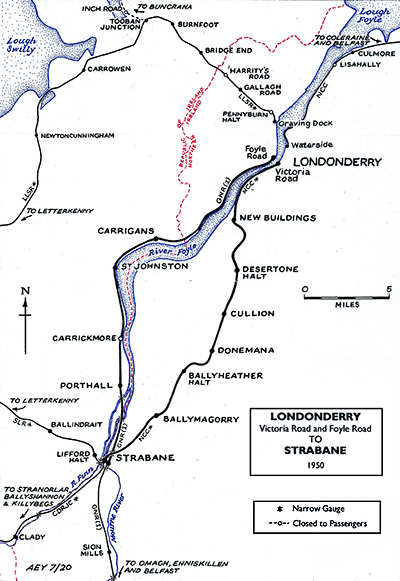 The line was mainly a single track railway, of the Irish standard gauge (5ft 3inch), but through Strabane station it was double track to allow trains to pass. The station was located to the north-west of its namesake just to the north of the River Mourne, which the line crossed over by means of a steel girder bridge. The line was mainly a single track railway, of the Irish standard gauge (5ft 3inch), but through Strabane station it was double track to allow trains to pass. The station was located to the north-west of its namesake just to the north of the River Mourne, which the line crossed over by means of a steel girder bridge.
Strabane was an important regional centre in County Tyrone and the station was provided with passenger and goods facilities.
By February 1859 Strabane was connected to Ireland’s capital city Dublin and by September 1861 it was connected to the north of Ireland’s largest city, Belfast. It was the route to Belfast, via Omagh, Dungannon and Portadown that later became known as the ‘Derry Road’.
On 1 January 1860 the L&ER leased its line to the Dundalk & Enniskillen Railway (for 99 years) who renamed themselves as the Irish North Western Railway (INWR) in 1862.
On 7 September 1863 the Finn Valley Railway (FVR) opened a branch between Strabane and Stranorlar. The branch connected to the L&ER line 30 chains to the south of the bridge over the River Mourne at Strabane station, which was also used by FVR trains.
In 1876 the INWR merged with other railway companies to form the Great Northern Railway Ireland (GNRI).
By the 1870s Strabane had three platform forms. The main passenger facilities were located on the up platform (southbound) in a substantial single storey brick building that included a short platform canopy. On the down side (northbound) of the line there was an island platform with two faces. The eastern face served the down main line and the western a loop that would have been used by trains from the FVR line.
Goods facilities were located to the east of the passenger station and they included a large two road goods shed with loading platforms. There were signal boxes at both ends of the station by 1882.
In 1892 the FVR merged with another company, the West Donegal, and it became the Donegal Railway (DR). The DR decided to convert the FVR route to 3ft gauge like the West Donegal and also to build their own station at Strabane. Their station, which opened on 16 July 1894, was located just to the west of the GNRI facility. A footbridge was provided, located at the south end of both, to the two stations. Extensive goods transhipment facilities were also built to the north of the station on the west side of the main line. Over the next decade the DR network expanded and Strabane became an important interchange point.
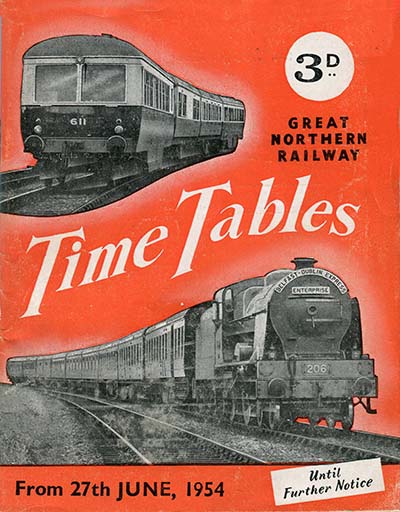 On 1 May 1906 the DR became a joint company of the GNRI and the Midland Railway (MR), an English company that had ambitions in Ireland. The joint company was called the County Donegal Railway Joint Committee (CDR). From this date the two stations at Strabane were managed as a single entity by the GNRI, CDR and the MR NCC. On 1 May 1906 the DR became a joint company of the GNRI and the Midland Railway (MR), an English company that had ambitions in Ireland. The joint company was called the County Donegal Railway Joint Committee (CDR). From this date the two stations at Strabane were managed as a single entity by the GNRI, CDR and the MR NCC.
After the partition of Ireland into two separate countries in 1921 (Northern Ireland and The Irish Free State) the GNRI system found itself located within two separate countries with all of the difficulties that imposed. Strabane was within Northern Ireland but about 11 miles of the almost 15 miles long line to Londonderry Foyle Road passed through the Irish Free State and then back into Northern Ireland.
In 1923 the MR became part of the London, Midland & Scottish Railway (LMS) and so that company, through the LMS NCC, became the partner of the GNRI in the running of the CDR.
In 1953 the GNRI had to be taken into the joint ownership of the governments of Northern Ireland and the Republic of Ireland (the Irish Free State having been renamed in 1949). The two governments ran the company through a GNR board until September 1958 when they passed the ownership to their two respective nationalised railway concerns. Strabane station being in Northern Ireland became part of the Ulster Transport Authority (UTA).
On 1 January 1960 all passenger services ceased on the CDR network and the former CDR station went out of use. On 15 February 1965 the UTA closed the ‘Derry Road’ route completely and Strabane lost all its rail services.
The station soon fell into a derelict state and the last remnants were finally demolished in 1989 as part of a new road scheme.
CLICK HERE FOR A DETAILED HISTORY OF STRABANE (GNRI) STATION
CLICK HERE TO SEE A MAP SHOWING THE STATION AS IT WAS IN 1872
Tickets from Michael Stewart. Timetables from Chris Hind, Jim McBride Paul Wright. Route map by Alan Young
Sources:
- Begley, J et al The County Donegal Railway - A Visitors Guide (County Donegal Railway Restoration Society, 1999)
- Challoner, Fairwell the Derry Road (Colourpoint, 2010)
- Johnson, S Johnson's Atlas & Gazetteer of The Railways of Ireland (Midland Publishing, 1997)
- Patterson, E The Great Northern Railway Ireland (The Oakwood Press, 2003)
- Patterson, E M The County Donegal Railways - Revised Edition (Colourpoint,2014)
Click here to see Strabane (CDR) station
Click here to see the stations between Londonderry Foyle Road and Strabane: Londonderry Foyle Road, Londonderry (Gallows Strand), Carrigans,
St Johnston, Carrickmore and Porthall
|

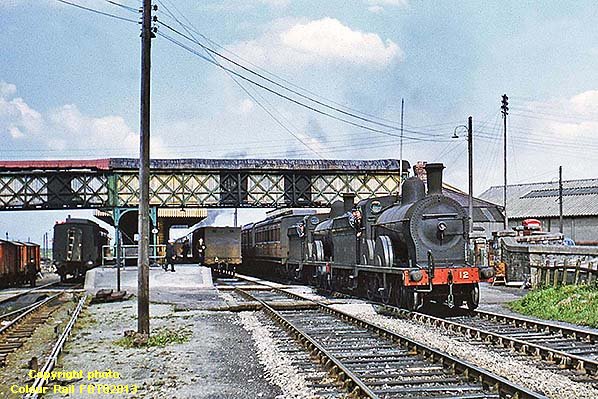 A busy scene at the Strabane 'GNRI' station looking north on 22 May 1956. Departing from the up platform is a Londonderry Foyle Road to Enniskillen service. At the head of the train is PP Class locomotive number 12 which entered service with the GNRI in 1911. The engine was withdrawn by the UTA in 1959. A Londonderry Foyle Road service is in the down platform and a single coach can be seen in the down loop platform.
A busy scene at the Strabane 'GNRI' station looking north on 22 May 1956. Departing from the up platform is a Londonderry Foyle Road to Enniskillen service. At the head of the train is PP Class locomotive number 12 which entered service with the GNRI in 1911. The engine was withdrawn by the UTA in 1959. A Londonderry Foyle Road service is in the down platform and a single coach can be seen in the down loop platform.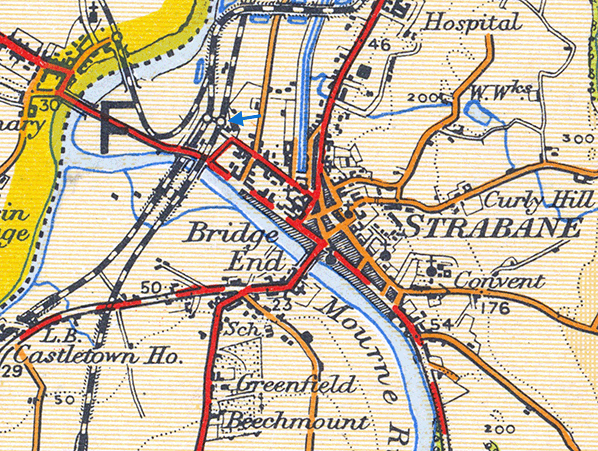
 The line was mainly a single track railway, of the Irish standard gauge (5ft 3inch), but through Strabane station it was double track to allow trains to pass. The station was located to the north-west of its namesake just to the north of the River Mourne, which the line crossed over by means of a steel girder bridge.
The line was mainly a single track railway, of the Irish standard gauge (5ft 3inch), but through Strabane station it was double track to allow trains to pass. The station was located to the north-west of its namesake just to the north of the River Mourne, which the line crossed over by means of a steel girder bridge. On 1 May 1906 the DR became a joint company of the GNRI and the Midland Railway (MR), an English company that had ambitions in Ireland. The joint company was called the County Donegal Railway Joint Committee (CDR). From this date the two stations at Strabane were managed as a single entity by the GNRI, CDR and the MR NCC.
On 1 May 1906 the DR became a joint company of the GNRI and the Midland Railway (MR), an English company that had ambitions in Ireland. The joint company was called the County Donegal Railway Joint Committee (CDR). From this date the two stations at Strabane were managed as a single entity by the GNRI, CDR and the MR NCC.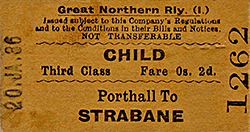
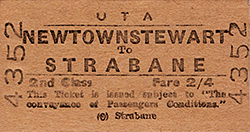
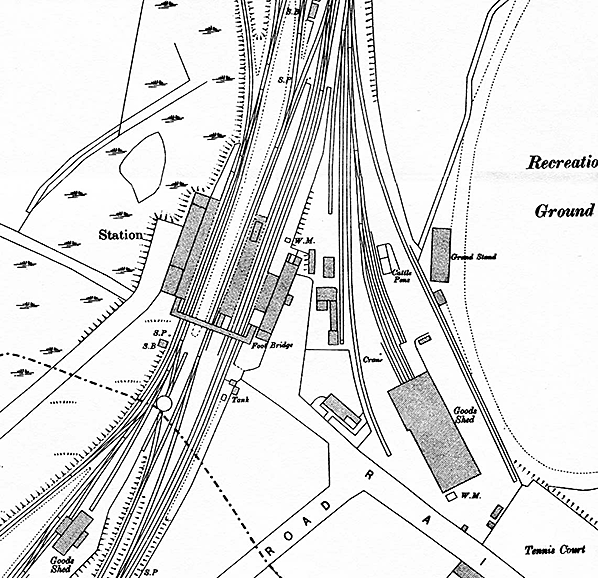 The two stations of Strabane shown on a 25-inch scale map from 1905. The GNRI station is the facility to the right and the Donegal Railway station is to the left. A footbridge links the two stations. To the right the extensive goods facilities of the GNRI can be seen. Click
The two stations of Strabane shown on a 25-inch scale map from 1905. The GNRI station is the facility to the right and the Donegal Railway station is to the left. A footbridge links the two stations. To the right the extensive goods facilities of the GNRI can be seen. Click 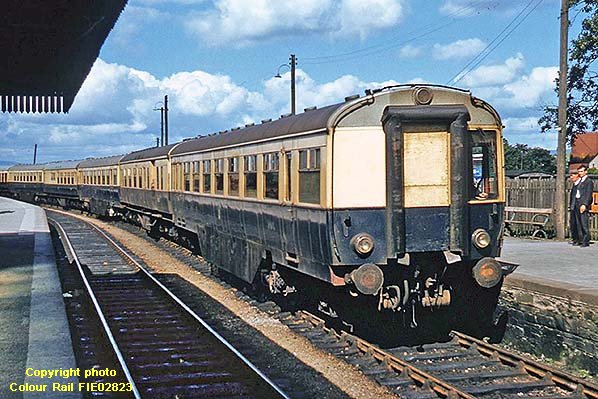
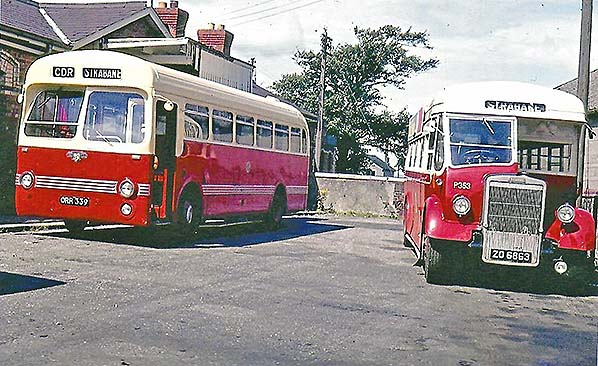 The forecourt of Strabane GNRI station seen in August 1966. The canopy seen above the bus to the left was positioned over the main entrance. At this time buses of the CDR used the forecourt as their terminus. They had originally terminated at the CDR station but when rail services ceased to run on the former GNRI line on 15 February 1965 they started to use this location.
The forecourt of Strabane GNRI station seen in August 1966. The canopy seen above the bus to the left was positioned over the main entrance. At this time buses of the CDR used the forecourt as their terminus. They had originally terminated at the CDR station but when rail services ceased to run on the former GNRI line on 15 February 1965 they started to use this location.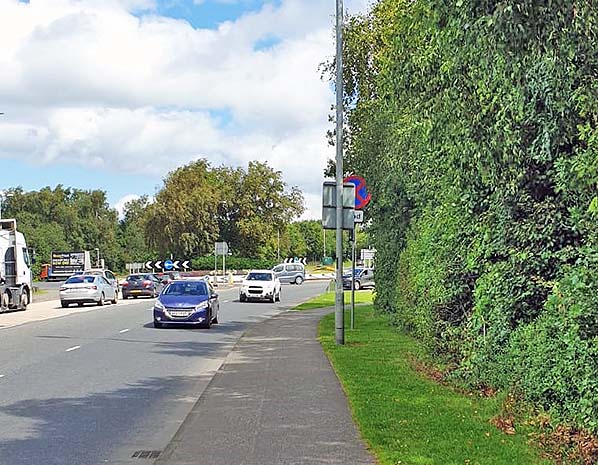 A view looking north at the site of the Strabane GNRI station on 18 July 2020.
A view looking north at the site of the Strabane GNRI station on 18 July 2020.
 Home Page
Home Page